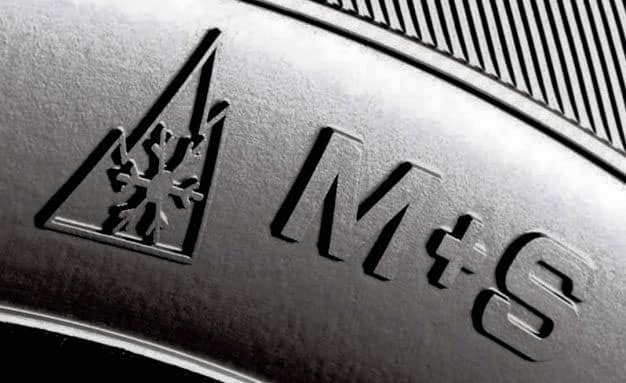
The three-peaked mountain and snowflake symbol can be found on the sidewall of your tires. Winter tires deliver superior braking and cornering in winter temperatures and conditions: ice, snow, slush and even cold, dry asphalt.
To give optimum grip at temperatures below 7 C, winter tires have a rubber compound that stays soft and flexible, and aggressive tread blocks that bite snow and ice. If you face cold temperatures and heavy, hard-packed snow, winter tires provide the most reliable performance and safety.
The mountain snowflake symbol indicates a winter tire meets the minimum requirements for providing traction in harsh conditions, though some tires exceed the symbol's requirements. You might be wondering why tires marked M+S ('mud' and 'snow'), also known as all-season tires, don't have the severe service symbol. That's because all-season tires are safe for most conditions, but they're not designed to give grip on ice or in sub-zero weather.
In fact, all-season and summer tires become hard at temperatures below 7 C, leaving you with reduced traction and unsafe handling.
Winter tires or chains are required on most routes in British Columbia from October 1 to April 30. For select highways not located through mountain passes and/or high snowfall areas, tire and chain requirements end March 31.
These routes are marked with regulatory signs posted on highways throughout the province. These signs are enforced by the police, ministry or other enforcement officials. Motorists who are not compliant may be turned away and fined.
